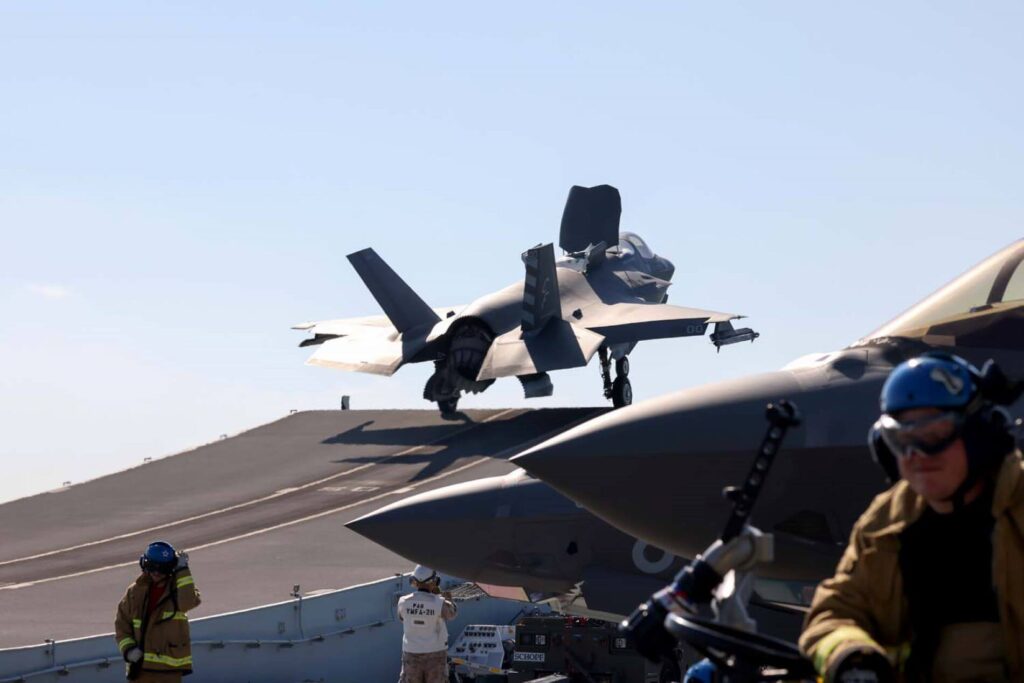British and American F-35 fighter jets took off from HMS Queen Elizabeth to bomb ISIS positions.
A part of Operation Shader, the bombing campaign was a joint effort of the Royal Air Force (RAF) 617 Squadron and the United States Marine Corps. According to RAF, 8 British and 10 American jets were involved.
“The involvement of HMS Queen Elizabeth and her air wing in this campaign also sends a wider message. It demonstrates the speed and agility with which a U.K.-led Carrier Strike Group can inject fifth generation combat power into any operation, anywhere in the world,” a statement quotes U.K. Carrier Strike Group commander Commodore Steve Moorhouse.
The jets operated within the largest British strike group since the Falklands war in the 80s, according to the military. It was also the first time British carrier-borne jets participated in active combat since the Bosnian war in the mid-1990s.
Neither the target of the attack nor the damage was revealed by the military.
This is not the first time UK’s F-35s have participated in a mission against ISIS. Starting in 2019, six of RAF’s new jets have been conducting armed reconnaissance missions over Syrian and Iraq territory from a base in Akrotiri, Cyprus.
HMS Queen Elizabeth, which was launched in 2014, started receiving F-35 jets in 2019.
For both UK Royal Air Force and Royal Navy, Lockheed Martin F-35B Lightning II has replaced aging British Aerospace Harrier II jets. The B variant of the American-made fighter features short take-off vertical landing (STOVL) capability, which allows to operate them from small aircraft carriers and short airfields.
